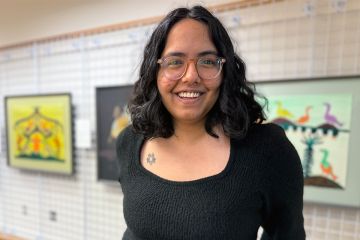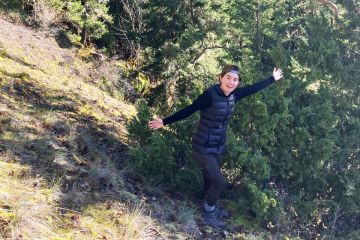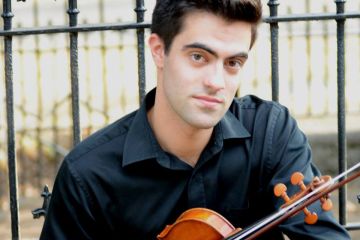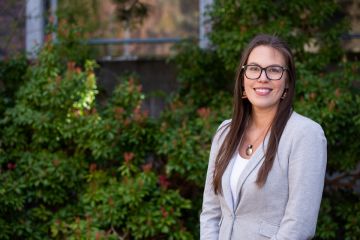Chasing the nearly impossible neutrino
- Vimala Jeevanandam

Jordan Myslik can trace his interest in physics back to grade three, when he became enamoured with the idea of UFOs.
“It’s a bit of an embarrassing origin story,” says Myslik, who receives his doctorate this month, and recently started work as a postdoctoral fellow in neutrino physics at Lawrence Berkeley National Laboratory in California. “But my fixation on UFOs led me to an interest in astronomy, which in turn compelled me to learn more about physics.”
Myslik grew up in Sudbury, Ontario where the world-renowned Sudbury Neutrino Observatory (SNO) turned on its detector and began taking data. “It was a huge deal,” says Myslik. “SNO was producing the results that eventually led to a Nobel Prize. Having SNO nearby was a major inspiration for me. Combined with my family's encouragement and my experiences volunteering at Science North (the local science centre), I became increasingly interested in pursuing a career in experimental particle physics.”
Myslik did his undergraduate degree at the University of Toronto, heading back to Sudbury each summer for research experiences at Laurentian University, working at SNO on supernova neutrinos and background quantification. “Neutrinos are everywhere,” says Myslik. "Each second, roughly 100 billion solar neutrinos pass through just one of your fingertips. However, neutrinos have no charge and a very low probability of interacting, which makes them very difficult to study." Through his experiences at SNO, Myslik began to develop as a researcher, using specialized equipment and building skills in computer programming.
Coming to UVic gave Myslik the opportunity to build on those experiences. “UVic is known for its particle physics program. With its connection to the TRIUMF laboratory and with T2K so close to commissioning and taking data, it was a great time to join.”
T2K (Tokai to Kamioka) is a neutrino experiment that runs 295 kilometers across the width of Japan. A beam of muon neutrinos or antineutrinos is generated from the Japan Proton Accelerator Research Complex on the East coast in Tokai and directed across the country to the Super-Kamiokande detector in the mountains of Kamioka, allowing researchers from around the world to investigate the phenomenon of neutrino oscillation.
Neutrinos come in three types (called flavours): electron, muon and tau. In neutrino oscillation, neutrinos produced as one of these flavours are later observed to have a different flavour. (This is sort of like serving yourself a bowl of chocolate ice cream, then when you sit down to eat it, finding that you have a bowl of strawberry ice cream.) Discovering neutrino oscillations (and showing that that neutrinos have mass) won Takaaki Kajita of Super-Kamiokande and Arthur B. McDonald of SNO the 2015 Nobel Prize in Physics. Experiments such as T2K continue to clarify the mysteries of neutrino oscillation and in turn, the secrets of the formation of the universe.
The world leading subatomic physics laboratory TRIUMF played a key part in setting up T2K. Myslik worked with experts at TRIUMF in Vancouver preparing equipment and temporarily moving to Japan. Once there, he helped set-up and operate the Time Projection Chambers (TPCs), a detector project led by UVic. These three gas-filled detectors allow researchers to precisely reconstruct the properties of charged particles produced in neutrino interactions.
Myslik’s research focused on ND280, a detector (that includes the TPCs) 280 meters away from the proton beam target, where he contributed to T2K's first measurements of antineutrino oscillations, including comparisons of how neutrinos and antineutrinos oscillate. “It was an amazing experience. I was collaborating on cutting edge physics with researchers from UVic and around the world.”
Today at Lawrence Berkeley National Laboratory, Myslik continues his research into the properties of neutrinos on the Majorana Demonstrator Neutrinoless Double Beta Decay Experiment in the Sanford Underground Research Facility in South Dakota. There he works with a team of physicists attempting to determine whether the neutrino is its own antiparticle.
“It's a different set of challenges from the work I did on T2K, but the experiences in hardware, software, and physics analysis on T2K at UVic prepared me well.”
Photos
In this story
Keywords: convocation, student life, graduation, alumni, physics, graduate research





